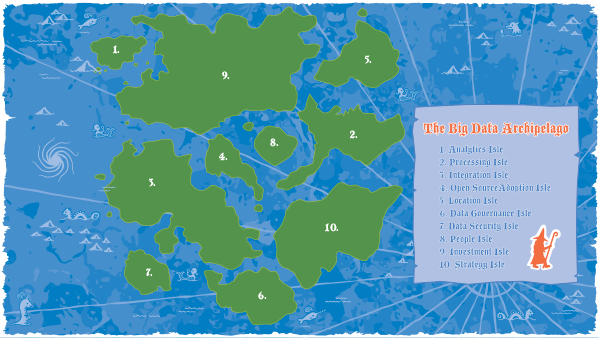“Don’t cry because it’s over. Smile because it happened.” -Dr. Seuss

About three months ago, I invited marketers to join me on a journey through the Big Data Archipelago, a collection of 10 islands, each focused on a key big data topic (see island names above). A visit to each of the islands involved examining the ways big data has impacted best practices with traditional data, and considering examples to illustrate the theme of each island. Before leaving the island, our visit ended with a short list of key takeaways for marketers.
Now that our journey through the Big Data Archipelago is over, you are better prepared to tackle the big data adventure that awaits you in your organization. Go forth and discover the unknown unknowns in your company’s big data—and if at any time you need a refresher, the Wizard is always here to guide you (Hint: you can bookmark the whole series with one link)
As a parting farewell, I’ve included a summary of the best practices below. As an added bonus, you can download the 2-page best practices handout to hang on your wall—courtesy of the Wizard.
Thank you for traveling along with us!
10 Best Practices: Traditional Meets Big Data
|
Stop # |
Island name | With our traditional systems, the best practice has been to… | With big data and its technologies, the best practice is becoming… |
|
1 |
Analytics | Gain insight by answering the known unknowns. | Make an impact by discovering the unknown unknowns. |
|
2 |
Processing | Try to optimize the data warehouse around mixed workloads. | Take advantage of the processing power of big data technologies. |
|
3 |
Integration | Build it and they will come. | Build it on demand using the best tools for the job. |
|
4 |
Open Source Adoption | Compare open source solutions by functionality and price. | Take open source seriously for big data platforms. |
|
5 |
Location | Centralize data and platforms. | Allow data to reside where it will provide the greatest value. |
|
6 |
Data Governance | Develop an enterprise-scale data governance program. | Tackle data governance one big data project at a time. |
|
7 |
Data Security | Hold IT responsible for data protection. | Foster a culture where data is treated as a corporate asset. |
|
8 |
People | Evolve toward a competency center. | Focus on individual roles and skills. |
|
9 |
Investment | Calculate ROI focusing on software acquisition, licensing, and maintenance. | Calculate ROI focusing on new development processes, organizations, and skills. |
|
10 |
Strategy | Use data to help achieve corporate strategic goals. | Use data to help achieve community and global goals. |
